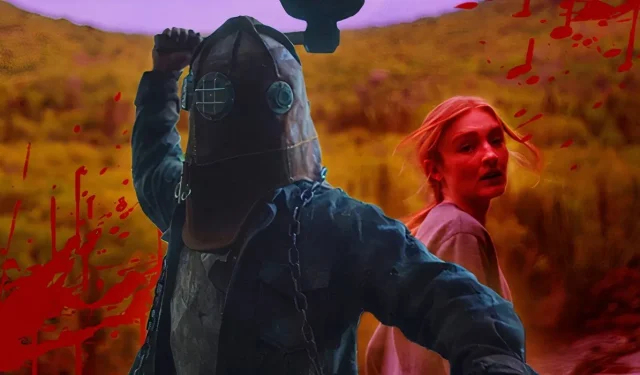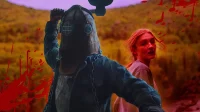In a Violent Nature may outwardly adhere to the familiar slasher film blueprint, yet it brings a fresh perspective that differentiates it from its predecessors. The 1996 classic Scream famously critiqued the rigid tropes found in horror, particularly slasher films, which often depict teens at risk of being executed by a relentless, voiceless murderer. This archetype is evident in well-known franchises like Friday the 13th and Halloween, where a masked killer systematically targets partying teenagers in increasingly outrageous and creative ways.
When set against the backdrop of remote woodlands, this summary could easily describe many films attempting to replicate those trends since the 1980s. On the surface, In a Violent Nature fits this mold: it showcases an unspeaking, undead antagonist who stalks and violently slays a group of unsuspecting teens after they unwittingly awaken his vengeful spirit by disturbing his mother’s locket. However, the movie develops in a way that is distinct from earlier slasher works like Madman, The Burning, and Hatchet.
In A Violent Nature: A Unique Horror Perspective
Subverting Horror Conventions in In A Violent Nature
In contrast to the majority of slasher films, In a Violent Nature presents a narrative from the killer’s viewpoint without resorting to comedic self-parody. The storyline unfolds at a measured pace, focusing on Johnny, the undead killer, who arises from the earth, arming himself to eliminate the teenagers one-by-one. This intriguing approach finally answers the question of what a character like Jason Voorhees might be up to during his downtime between kills. Viewers witness Johnny roaming through tranquil meadows and lush forests, pausing to appreciate his surroundings before moving into his next lethal encounter. This refreshing perspective effectively amplifies the horror.
Even Stephen King has given a nod of approval to In a Violent Nature, though the film does not conform to traditional notions of horror. The film lacks the usual tension found in slasher narratives; viewers are constantly aware of Johnny’s whereabouts, and it quickly becomes apparent that the teens are unlikely to escape his wrath. Nevertheless, the movie’s premise evokes an unsettling creepiness, turning serene forests into haunting venues. The audience finds it difficult to enjoy the breathtaking scenery, perpetually reminded of Johnny’s ominous presence.
Johnny: A Sympathetic Villain
Johnny as a Tragically Flawed Character
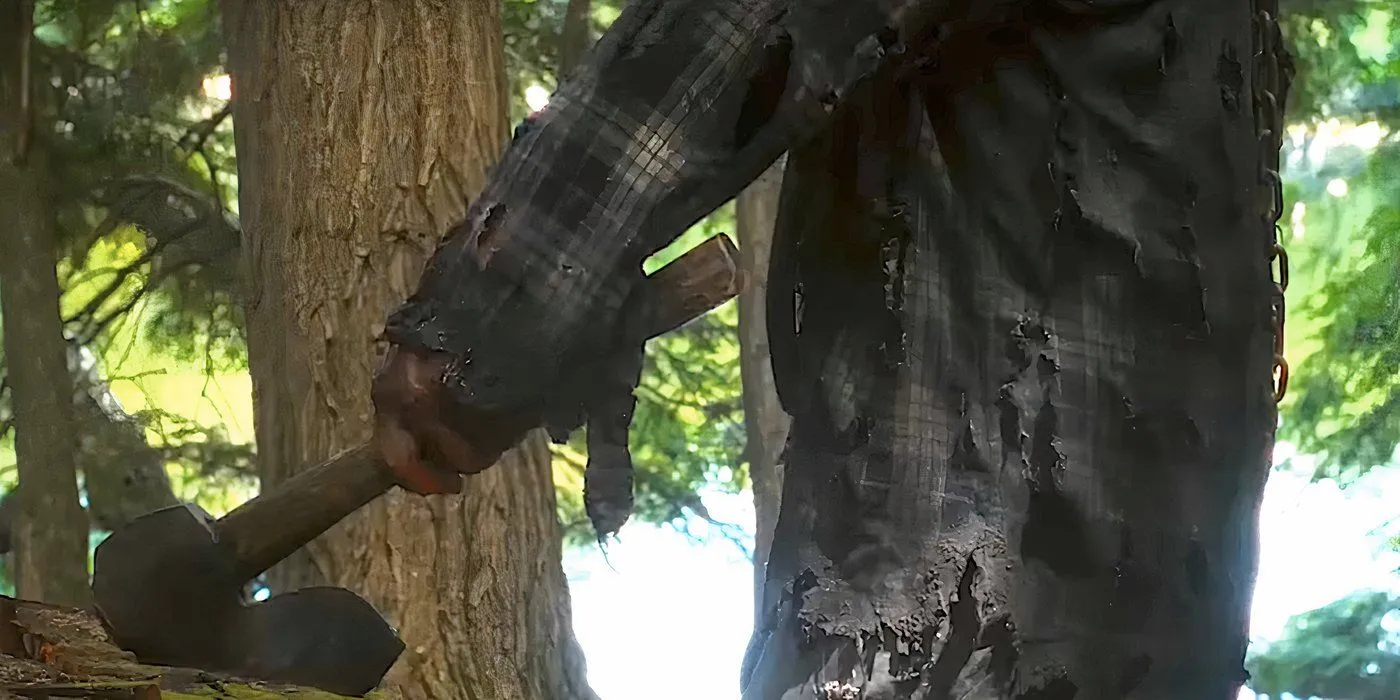
Throughout his killing spree, Johnny’s moments of childlike simplicity serve as jarring reminders of his mental state. His brief childhood playtime with toy cars suggests he may not fully grasp the chaos he’s causing. Despite his horrific actions, Johnny is painted as a surprisingly empathetic figure. Mirroring elements from its predecessors, In a Violent Nature presents a killer with an almost innocent mindset.
Johnny’s rampage is triggered when someone steals his mother’s cherished locket, launching him into an attack driven not by malice, but by a profound sense of loss. Although the film does not overtly humanize Johnny, it’s hard for viewers not to feel a pang of sympathy for him as they follow his story. Spending an entire film alongside Johnny creates an unsettling connection between the audience and his fate, amplifying the horror of each gruesome death.
Distinctive And Gruesome Kill Scenes
A Brutal Expression of Slasher Tradition
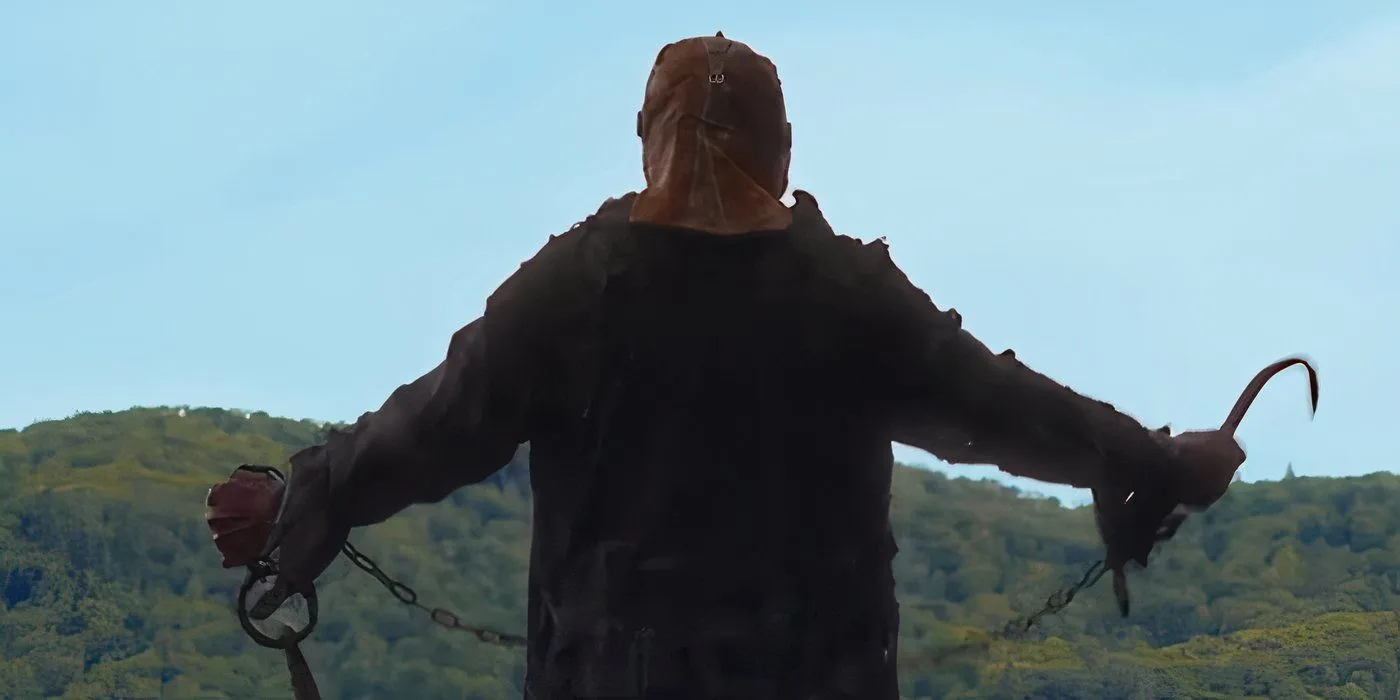
The film’s unconventional narrative style enhances the impact of its kills. Traditional slasher films often include distractions such as character drama or humor, which can dilute tension. However, In a Violent Nature strips away these elements, juxtaposing long, eerie silences with abrupt, graphic violence. This stark contrast solidifies its position as a slasher film while steering clear of convention.
Other Films Embracing the Killer’s Perspective
Notable Examples of Killer-Focused Narratives in Horror

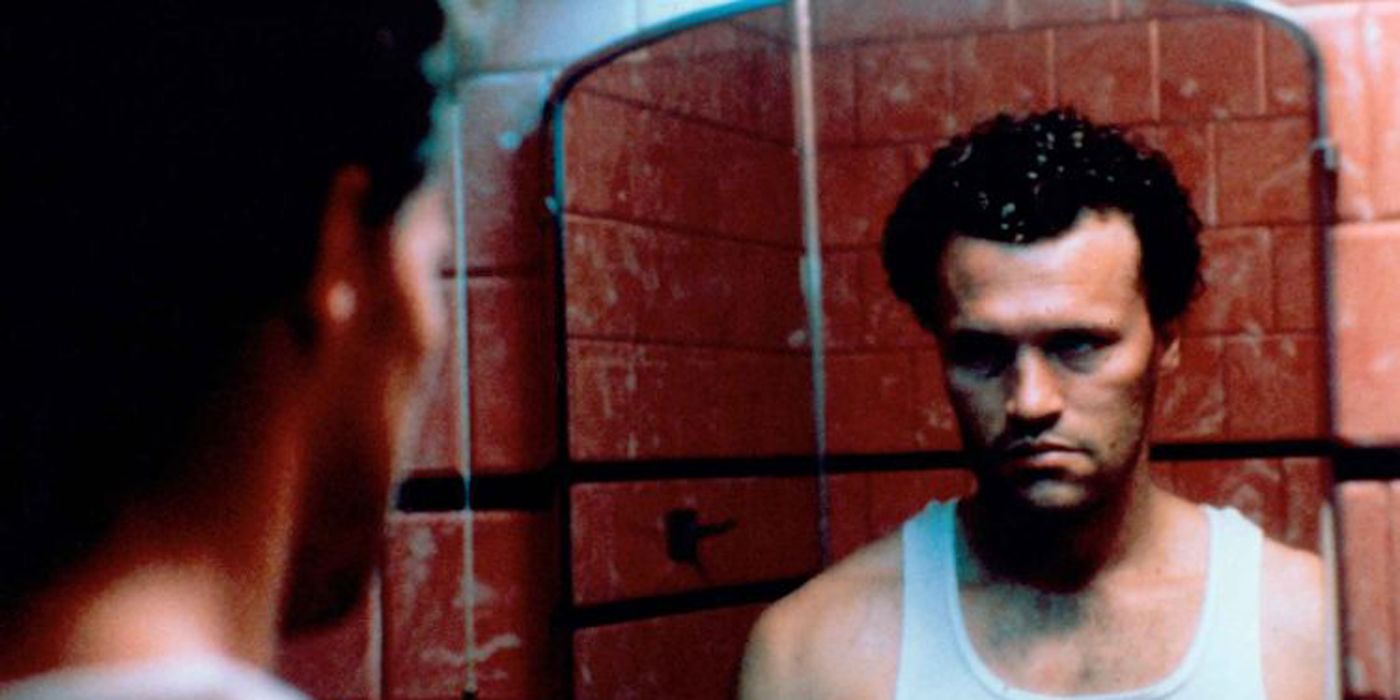
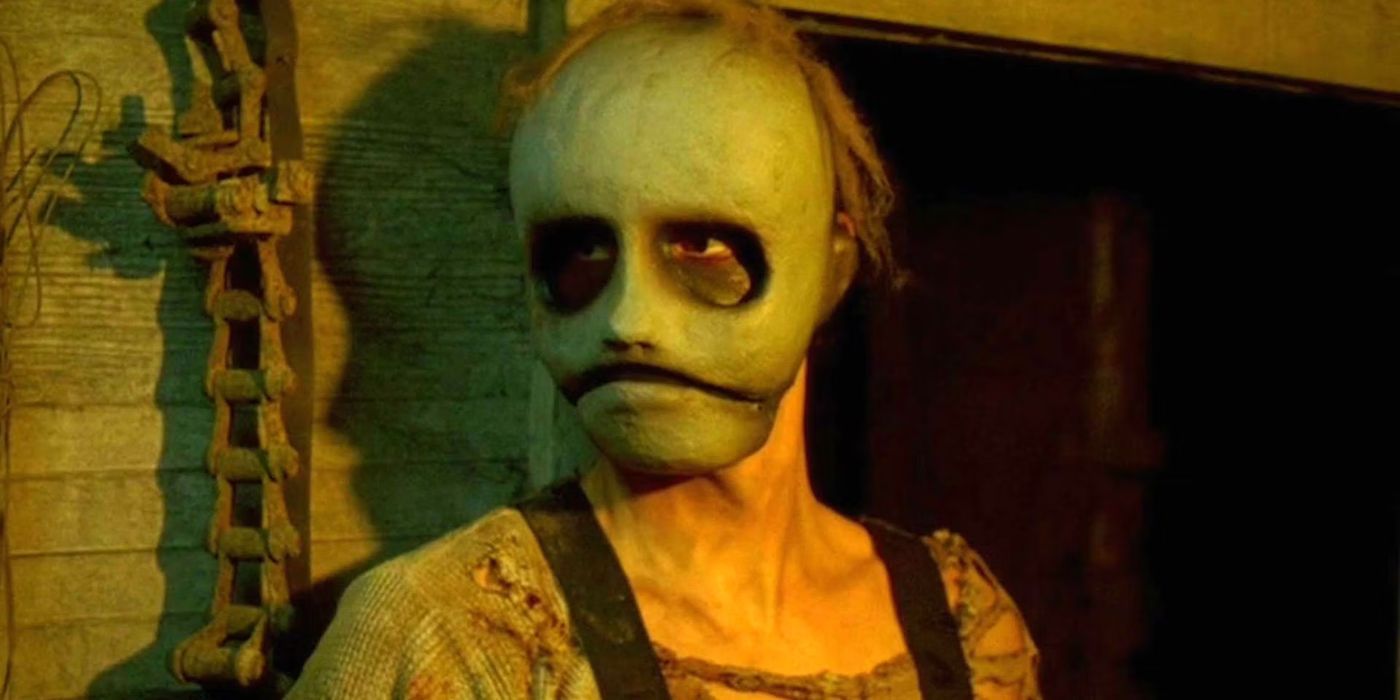
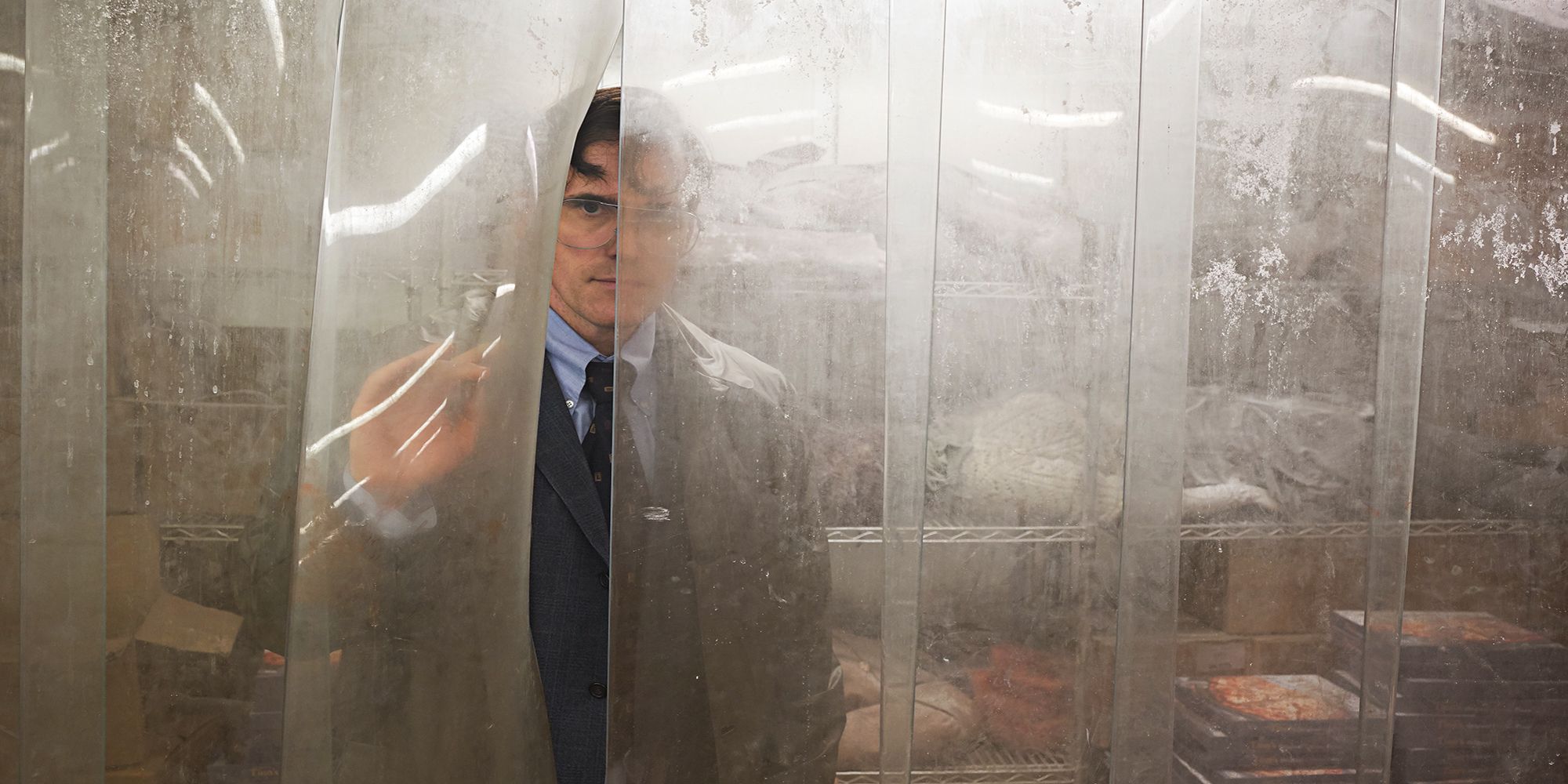
In a Violent Nature is not alone in choosing to showcase the killer’s perspective, as several horror films have navigated this thematic territory. Movies like American Psycho, Henry: Portrait of a Serial Killer, and The House That Jack Built delve into the psyche of their antagonists, placing viewers in a deeply uncomfortable position as they witness their heinous deeds. However, these films focus on real-world killers, distinguishing them from In a Violent Nature.
In the realm of slasher films told from the killer’s viewpoint, Behind the Mask: The Rise of Leslie Vernon presents an interesting case. This mockumentary-style film exists in a universe where classic killers like Jason Voorhees and Freddy Krueger are real, following a determined killer aiming to carve his own niche in the horror genre. Although this film leans comedic, it still presents Leslie Vernon as a surprisingly formidable antagonist.
While various films have explored killer perspectives, In a Violent Nature distinctively stands out. By portraying Johnny as a supernatural, silent killer, the movie boldly places him at the forefront, inviting the audience to journey through his gruesome saga.
